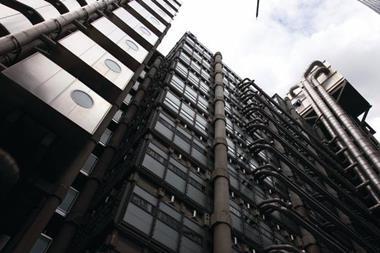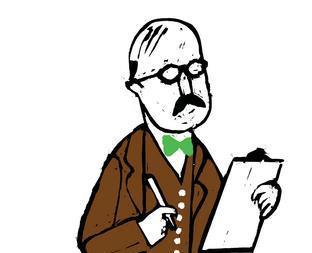Household insurance premiums are rising fast
The cost of annual home buildings cover in the UK has jumped almost 10% in the past year, with the average quoted premium hitting £227 – the highest level since the AA British Insurance Premium Index began in 1994, writes Lauren MacGillivray.
But the AA’s findings also show that while premiums have leapt, high competition is feeding an ongoing price war.
The index, released late last month, shows that the average quoted premium for buildings insurance increased 9.8% in the past year, and 1.6% over the quarter to July.
Meanwhile, contents premiums rose 1.8% to £125 in the quarter to July, down a few pence from last year. The cost of a combined buildings and contents policy remained unchanged at £298.
However, the AA’s ‘Shoparound Index’ – which averages the three lowest premiums and is considered to be closer to what most people pay – shows a different story. This reveals that all three types of cover fell over the quarter. Buildings dropped 2.1% to £130; contents was down 0.4% to £67; and combined was down 2p to £192.
“Home insurance offers remarkable value for money, despite the nearly 10% rise in the cost of buildings cover over the past year,” AA Insurance director Simon Douglas says. “Many commentators believed that the recession would see significant rises in theft and accidental damage claims – and thus premiums – but this hasn’t proved to be the case.
“Although insurers are reporting increased claims, these only now seem to be affecting contents premiums which, over recent months, had been falling.”
Home Insurance Report, released by Defaqto in August, says that while the 2007 summer floods did not raise premiums sharply, they have been steadily rising over the past eight quarters.
The report’s author and Defaqto’s insight analyst, general insurance, Michael Powell, says: “As consumers are now starting to feel the pinch of the recession, many are looking at their home insurance cover and are looking for cheaper premiums. This may have an effect on the market and further increases may not be seen in the final two quarters of 2009.”
The report warns that reducing premiums against higher claims inflation is a sure way of making an underwriting loss.
“In the current market, insurers will struggle to make an underwriting profit. Investment returns are nowhere near where they were a few years ago and there will be a decline in the reserves available for release to prop up the market,” it says.
“For some insurers, the offers currently being given are short term and may be used as loss leaders to attract new business. The hope is that by taking a hit in the first year, it is a risk well worth taking; especially if the customer renews in the following years. Also, the ability to cross-sell other financial products may make the current underwriting practice acceptable.”
HARDENING MARKET
Competition remains fierce in the home insurance market, although there are signs that rates are starting to harden.
According to figures from the ABI, the five largest players hold a total market share of 63%; the top 10 hold 85.52%; the top 20, 97.29%. The ABI puts the top three providers, in order, as Aviva, RBS Insurance and RSA.
Douglas cites several competitive offers, such as free contents cover when a policyholder buys buildings insurance.
But he adds: “The market is hardening and with depleting reserves, increasing numbers and sizes of claims, increasing fraudulent activity, lack of investment return and increasing reinsurance costs, insurers are having to look towards increasing premiums. The dilemma is to do so without losing market share.”
The reasons for the premium rise are attributed, in part, to increased building costs, such as the additional cost of bringing damaged buildings up to modern insulation and wiring standards. There has also been a rise in storm damage and flood claims, often in places without a history of such weather damage.
Douglas says there has been “some extraordinary weather” over the past year in the UK, including mini-tornadoes, high winds, damaging hail storms, lightning strikes and flash floods.
The aggregator market has also affected price. “Aggregators are something of an issue,” he says. “On the one hand, while they certainly provide a convenient way of comparing prices, it is really important that customers don’t end up buying something that is less than adequate for their needs. Buying cheap isn’t the same as buying savvy.”
Allianz Retail’s head of pricing and reporting Gareth McChesney says about 30% of household insurance is now sourced through aggregators, making the market highly competitive.
“We need to recognise that pricing in the market is based upon experience in a benign year.
“The market hasn’t hardened since the 2007 flooding. The level is probably lower than it needs to be; there has been no increase in rates for contents, and buildings has risen only marginally at a time when we’re still seeing claims inflation.”
RECESSION EFFECTS
Changes in the housing market have affected household insurers. But to what extent?
The number of new mortgage approvals has dropped significantly. Figures for June this year from the Council of Mortgage Lenders show that gross mortgage lending was £12.3bn, up 17% on May but down 48% compared with figures for June last year.
Defaqto also published figures for the number of new loans for first-time buyers. In April this year, 13,504 loans were approved – 28% down on April 2008.
The report says: “The credit crunch has really hit the housing market the hardest. Mortgage lending has decreased substantially over the past 12 months. The number of loans for first-time buyers has also seen a decrease.
“If you also consider that the building trade is not building at the same level as a few years ago, the outlook for new business in the home insurance market is not positive.”
But McChesney says: “The building of new homes was suppressed during the recession. Fewer people have been moving, even though property prices have dropped.
“This probably has given first-time buyers more opportunities to buy. Because of this, there hasn’t really be any real negative impact to home insurance sales.”
Zurich’s technical underwriting manager Steve Gilbert adds: “The home building market has been hit quite extensively; therefore the number of new properties coming on to the market is lower than forecast.
“For insurers, this doesn’t necessarily have a significant impact in terms of the size of the market, as at any given time new-build forms a relatively small part of the overall housing stock.”
He says that it is more likely that insurers will get requests to cover extensions as customers choose to build on to their properties rather than moving.
But he adds that once the market picks up, it is likely that subsidence claims will increase as surveys reveal possible damage to properties put on the market. IT




































No comments yet